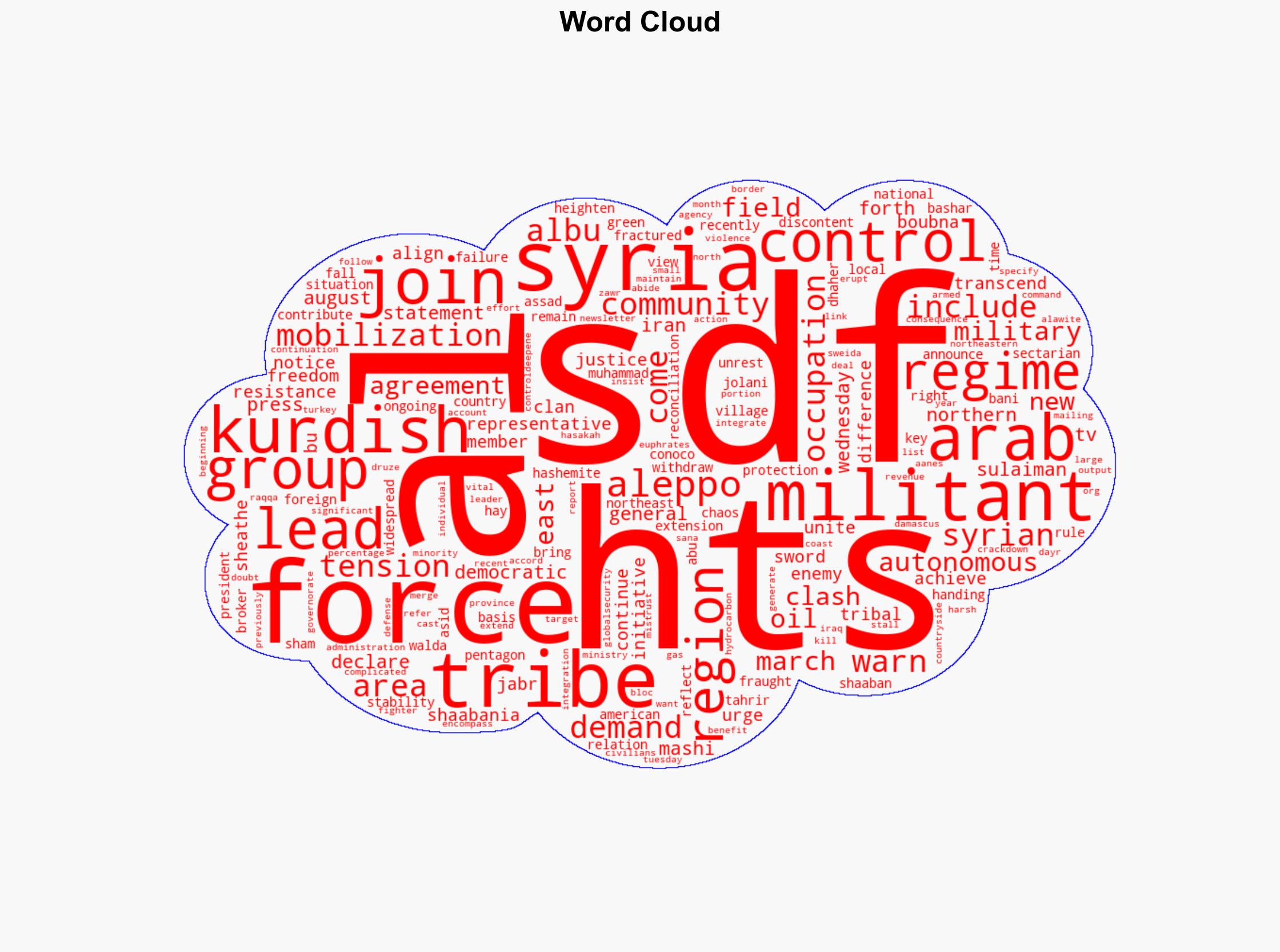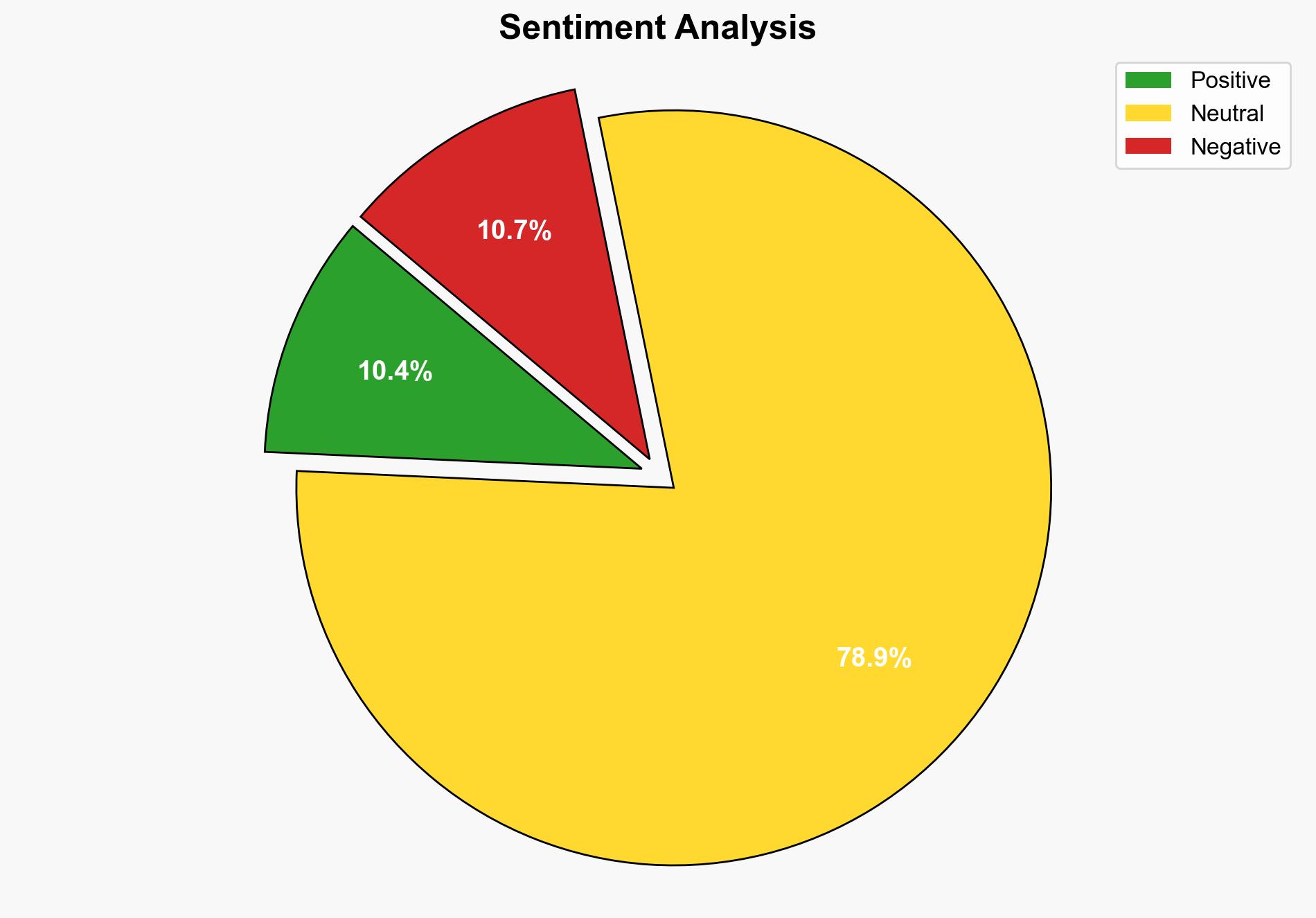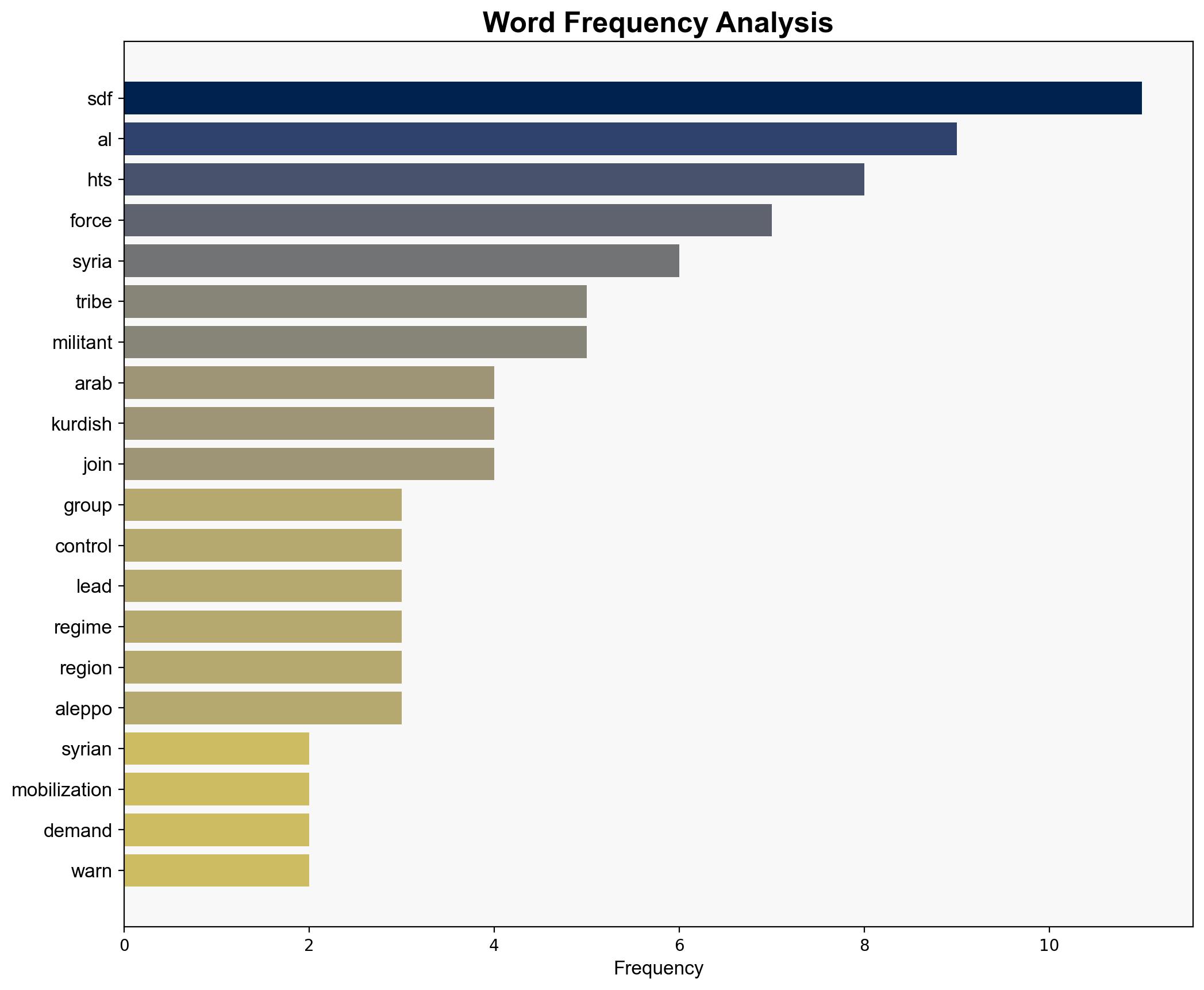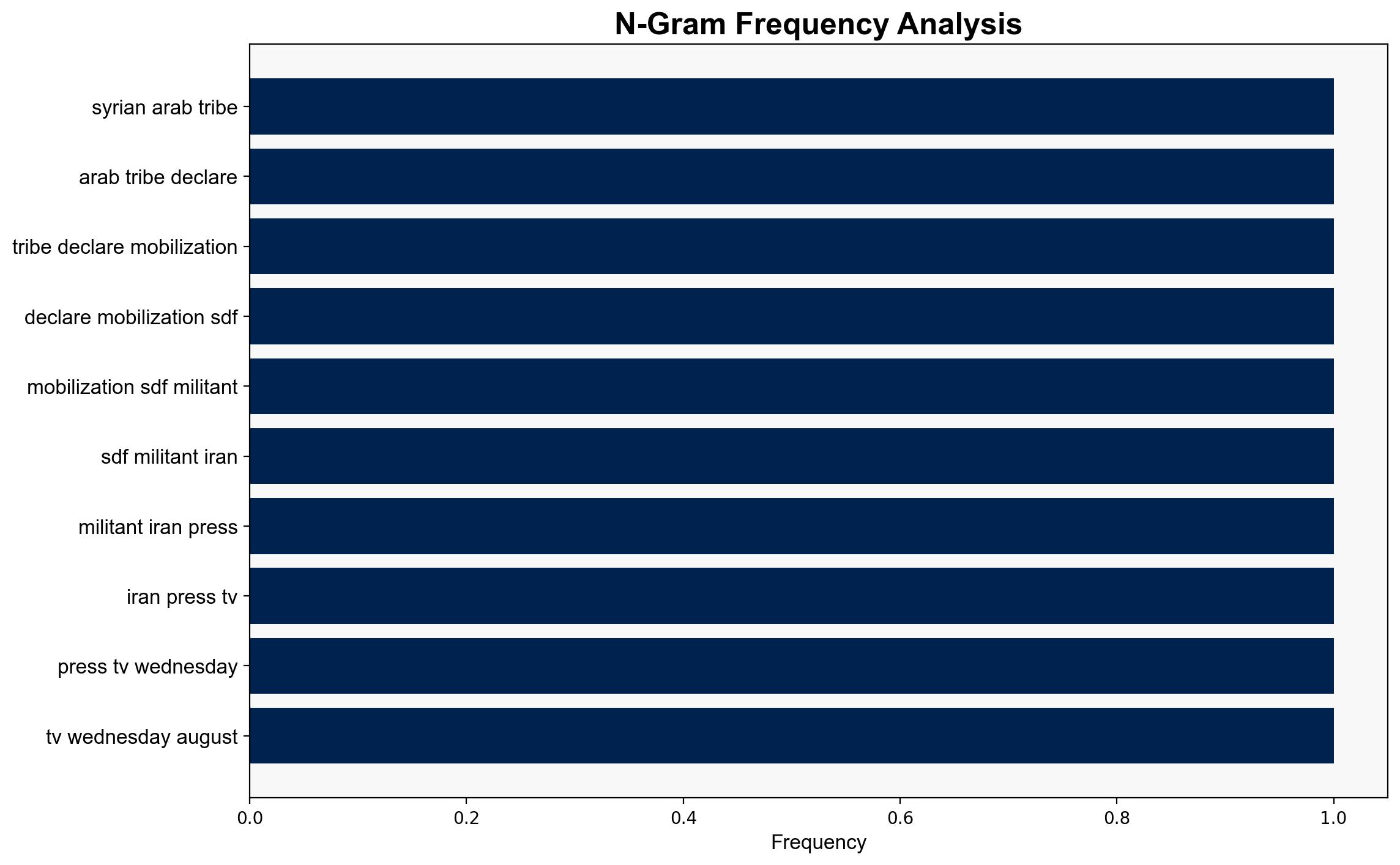Syrian Arab tribes declare ‘mobilization’ against US-backed SDF militants – Globalsecurity.org
Published on: 2025-08-14
Intelligence Report: Syrian Arab tribes declare ‘mobilization’ against US-backed SDF militants – Globalsecurity.org
1. BLUF (Bottom Line Up Front)
The mobilization of Syrian Arab tribes against the SDF reflects deep-seated ethnic and political tensions in northeastern Syria. The most supported hypothesis is that this mobilization is a reaction to perceived foreign occupation and marginalization by the SDF, which is viewed as Kurdish-dominated. Confidence level: Moderate. Recommended action: Engage in diplomatic efforts to mediate between the SDF and Arab tribes to prevent further escalation and potential regional destabilization.
2. Competing Hypotheses
Hypothesis 1: The mobilization is primarily driven by ethnic tensions and a reaction to perceived Kurdish dominance and foreign occupation by the SDF, exacerbated by recent U.S. military movements.
Hypothesis 2: The mobilization is a strategic maneuver by external actors, such as Iran or the Syrian government, to destabilize the region and weaken U.S. influence by exploiting local grievances.
Using ACH 2.0, Hypothesis 1 is better supported by the direct statements from tribal representatives and the historical context of Arab-Kurdish tensions. Hypothesis 2 lacks direct evidence linking external actors to the mobilization, though it remains plausible given regional dynamics.
3. Key Assumptions and Red Flags
Assumptions include the belief that the SDF is perceived uniformly as a foreign entity by all Arab tribes, and that tribal mobilization is entirely grassroots. Red flags include the lack of explicit evidence of external manipulation and potential bias in interpreting tribal motivations solely through ethnic lenses. Missing data on the internal dynamics within the SDF and tribal alliances could skew analysis.
4. Implications and Strategic Risks
The mobilization could lead to increased violence and destabilization in northeastern Syria, potentially drawing in regional powers and complicating U.S. strategic interests. Economic impacts may arise from disrupted control over oil and gas fields. Geopolitically, this could embolden other factions to challenge SDF authority, risking a broader conflict.
5. Recommendations and Outlook
- Initiate dialogue between the SDF and Arab tribal leaders to address grievances and reduce tensions.
- Monitor for signs of external influence to preempt further destabilization efforts.
- Scenario-based projections:
- Best Case: Successful mediation leads to a power-sharing agreement, stabilizing the region.
- Worst Case: Escalation into widespread conflict, drawing in regional actors and undermining U.S. presence.
- Most Likely: Continued low-level skirmishes and unrest, with intermittent negotiations.
6. Key Individuals and Entities
Sulaiman Al Mashi, Al Boubna and Al Shaabania tribes, Al Bu Jabr clan, Abu Muhammad Al Jolani.
7. Thematic Tags
national security threats, regional focus, ethnic conflict, geopolitical strategy





